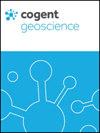The use of terrestrial laser scanning in monitoring and analyses of erosion phenomena in natural and anthropogenically transformed areas
引用次数: 7
Abstract
Abstract Implementation of terrestrial laser scanning creates new opportunities in the analysis of processes occurring in the environment. Terrestrial laser scanning (TLS) enables fast, precise mapping of land relief and dimensions of technical structures. TLS allows moving from traditional methods, such as point measurement, to differential analyses of a relief model. TLS allows accurate analyses of land relief changes and erosion phenomena, both in terms of the processes intensity and range, and the initial and intensifying events. The paper presents the authors’ experiment with the use of the TLS technology in erosion processes monitoring and analyses. The authors present the methodology of using TLS which contributed to the acquisition of reliable results by providing optimal conditions for the research. The paper shows the effects of laser scanning in order to analyse the intensity of soil erosion in mountainous forest area with a large number of measurement stations, which resulted in a dense points cloud. Differential model method allowed to evaluate erosion phenomena in the form of rills resulting from surface flushing, which is impossible to assess by traditional methods of erosion measurements. In the paper, we showed the necessity to choose the proper coordinate system (object or scanner) for the analysis of the landslide, depending on structure and direction of the soil masses movement. The application of the object coordinate system showed greater erosion phenomena range (ca 12%) on buttress stabilizing landslide and ca 44% on natural landslide, in which the application of the object coordinate system increases the number of observations by 40%.利用地面激光扫描监测和分析自然和人为改造地区的侵蚀现象
地面激光扫描的实施为分析环境中发生的过程创造了新的机会。地面激光扫描(TLS)能够快速、精确地绘制地形起伏和技术结构的尺寸。TLS允许从传统方法(如点测量)转移到地形模型的差分分析。TLS可以精确分析土地起伏变化和侵蚀现象,包括过程强度和范围,以及初始和强化事件。本文介绍了作者将TLS技术应用于侵蚀过程监测与分析的实验。作者提出了使用TLS的方法,通过为研究提供最佳条件,有助于获得可靠的结果。本文介绍了激光扫描在分析山地林区土壤侵蚀强度时,由于测量站数量多,造成了密集的点云。差分模型方法可以评估地表冲刷形成的细沟形式的侵蚀现象,这是传统的侵蚀测量方法无法评估的。在本文中,我们指出了根据土体的结构和运动方向,选择合适的坐标系统(物体或扫描仪)进行滑坡分析的必要性。物体坐标系的应用对支撑稳定型滑坡的侵蚀现象范围更大,约为12%,对自然滑坡的侵蚀现象范围约为44%,其中物体坐标系的应用使观测次数增加了40%。
本文章由计算机程序翻译,如有差异,请以英文原文为准。
求助全文
约1分钟内获得全文
求助全文

 求助内容:
求助内容: 应助结果提醒方式:
应助结果提醒方式:


